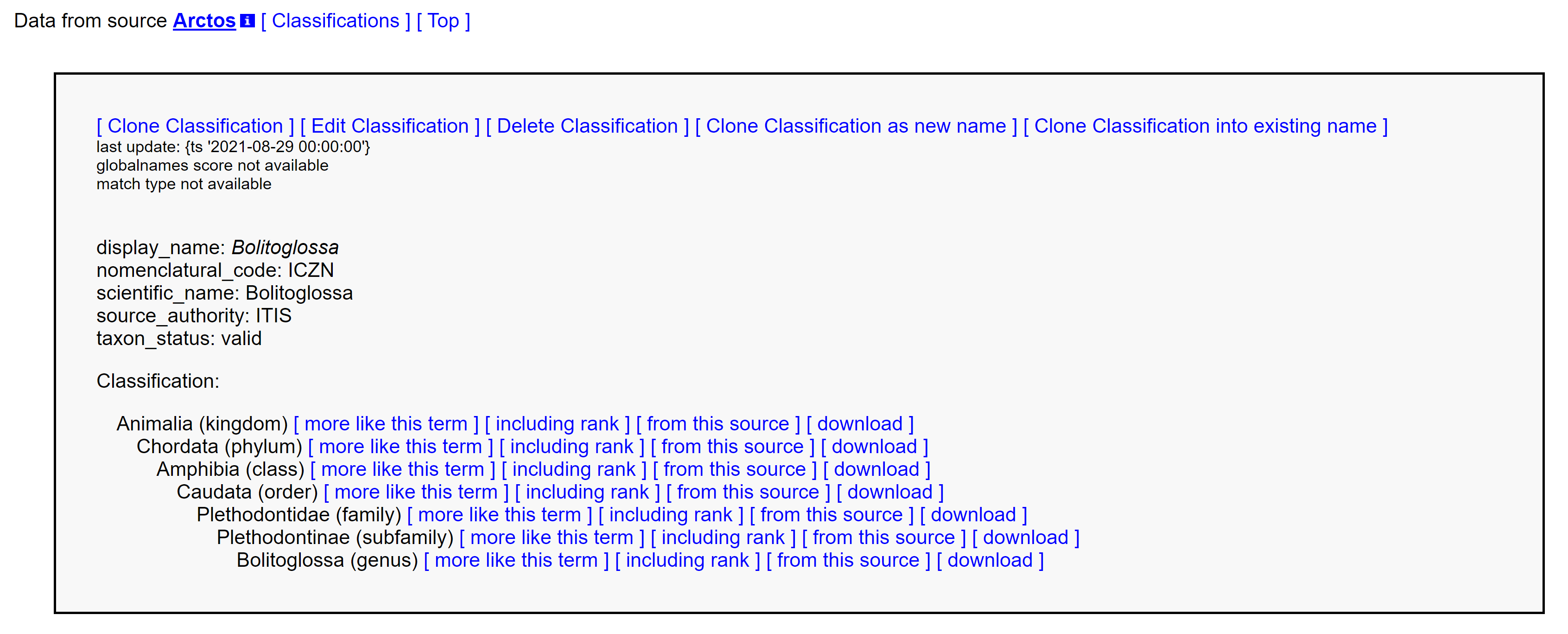Herp Curatorial Manual | Installing Fluid Herps
Table of Contents
It is very important that specimens are installed properly so that can be found. Specimens are installed according to the herp taxonomy used in the collection. This may not be the same as what is taught in classes or used in other museums. MVZ Curators determine what family names are used in the collection, and these names may not match currently accepted families. For example, the MVZ uses Iguanidae while other collections split the family into multiple families.
Fluid-preserved herp specimens are installed in jars up to one-gallon in size. Larger specimens that don’t fit in jars are installed in steel tanks in the same room as the jars for that taxonomic group.
Follow these steps to make sure that jars of specimens are put away in the right place according to MVZ herpetology taxonomy.
- Find the correct family name for your species. The MVZ Herpetology collection is organized taxonomically to the level of family. There are two ways to find the family name used in the collection.
- Search under Catalog Records for the genus in Arctos, then click on one of the records to get to the specimen detail page. The family name will show along with the rest of the taxonomy in the identification block.

- Search under Taxonomy for the genus, click on that name, and scroll down to the Arctos Classification to find the family name.
- Search under Catalog Records for the genus in Arctos, then click on one of the records to get to the specimen detail page. The family name will show along with the rest of the taxonomy in the identification block.

- Find the genus and species of interest. Within a given family, specimens are arranged alphabetically by genus and then by subspecies within a genus. If a subspecies is listed on the jar, install that jar AT THE END of the species. For example, Masticophis lateralis euryxanthus goes after all of the Masticophis lateralis.
- Arrange jars geographically by country. Specimens of the same taxon (genus, species, and subspecies if applicable) are arranged geographically – first by country. For example, Mexico comes BEFORE the United States. USA is not written on the jars, but in this example US states are installed AFTER Mexico. Remember that Puerto Rico is considered a US state and organized alphabetically along with other US states.
- Within the US, arrange jars alphabetically by State, then by County, then by jar number or MVZ numbers or fluid type. States and counties are organized alphabetically within a state, e.g., California comes before Nevada and Alameda County CA comes before Contra Costa County CA. If there are multiple jars for a county, jars are organized by the range of MVZ catalog numbers – for example, jar 1 from Alameda County might have MVZ 1-5000, Jar 2 has 5001-20000, Jar 3 has 20001-40000, etc. Two jars hould never have the exact same thing, they should always be sequential by MVZ number.
- Consider the fluid and data type. The standard storage for herp fluid specimens is 70% ethanol (except for cleared-and-stained specimens). Jars housing specimens in 70% ethanol are not labeled with the fluid type. If specimens are stored in different fluids (e.g., formalin, 95% EtOH), they are put in separate jars that are labeled with the fluid type. Specimens in fluid other than 70% ethanol, specimens with no locality data, and fluid-preserved stomach contents are housed at the end of all 70% ethanol specimens of a given taxon with locality data.
- Pay attention to proper orientation. Make sure that the jar label is facing forward and is not crooked in the jar, the specimens are head down, the lid is tight, and the specimens are in nice rows on the shelves, one behind the other.
- Refill jars with appropriate fluid. Fluid levels should be at the top of the jar. If the fluid level is low, refill the jar to the top with the proper fluid – 70% ethanol unless the jar is specifically labeled as having formalin or 95% ethanol.
